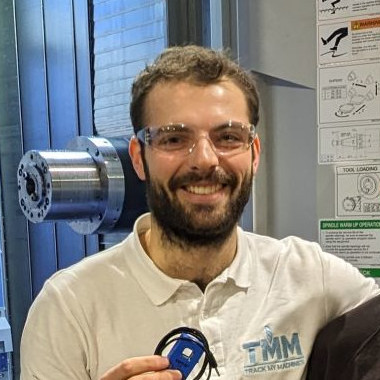How does lean manufacturing apply to machine shops?
Wednesday Apr 05, 2023
If you’ve been around engineering for a while you’ll have heard the term Lean Manufacturing, sometimes just referred to as Lean. I’ve heard it used a lot when engineers and managers are trying to improve their machine shop productivity. But what does it actually mean?
Lean manufacturing
Lean manufacturing is the art of continually improving a process, often by reducing waste.
But a process can be improved in many ways and it’s quite a vague statement. The idea is that when a process has been in development, more resource has been thrown at it than is actually required. By trimming the “fat” from this process costs can be reduced, or the resource can be used more efficiently and improve productivity.
Applied to a machine shop
In a machine shop some of these resources are:
- Machine time
- Material
- Manned intervention
Looking at these each in further detail:
Machine Time
This is arguably the most important part of the manufacturing process in a machine shop that could be improved. Cycle times can be optimized, the first time a cycle has been developed it’s often when there’s pressure to get good components out of the door. As a result this is the first opportunity for optimisation.
The next element of machine time to optimise is out-of-cycle time. Also called unplanned downtime, this is time taken between components.
Companies who use TrackMyMachines every day monitor this out-of-cycle time with reason codes such as:
- Work Setting
- Tool Setting
- Breakdown
- No Operator
- Waiting for 1st Article Inspection

These reasons are added by operators whenever possible.
Some contributing factors to out-of-cycle time are what some consider necessary such as Work Setting, Tool Setting etc. Other factors such as Breakdown, No Operator and Waiting for 1st Article Inspection some would consider unneccessary and should be eliminated completely. It’s only when these reasons for downtime are tracked that their actual impact on production can be analysed.
Even looking at the necessary reason codes such as Work Setting, there might be a justification for investing in better work-holding such as quick change collets or Zero-Point milling vices.
Material
Material wastage is another resource in a machine shop that can be reduced. Mostly reliant on good quality practises, material wastage costs not only the material value, but the machine time spent up to the point it’s non-compliant and also the operator’s time too. This quickly adds up if there’s also a batch run of parts that are all found to be non-compliant to specification.
There is no silver bullet for a machine shop with 6 sigma (99.99966%) quality, but there are a number of practises that every shop can start to adopt to help improve their quality metrics. In-process inspection is the act of measuring features on parts that are partway through their full manufacturing process. This helps to catch errors before they become catastrophic, and also to help change tools and offsets before they produce non-compliant components.
Manual Intervention
When processes aren’t so stable due to stringy material that won’t chip, or differing hardnesses across a component that break cutting tools unexpectedly, operators need to get involved much more often than expected. Manual intervention is a key productivity killer that drains the automation benefits that should be available from good CNC machines.
To reach any kind of Lean Manufacturing, unreliable processes are the first problem you must tackle as these waste every kind of resource imaginable, from material to machine and operator time.
If you’d like more insight into where your processes can be improved and you can achieve real Lean Manufacturing, get in touch below!

